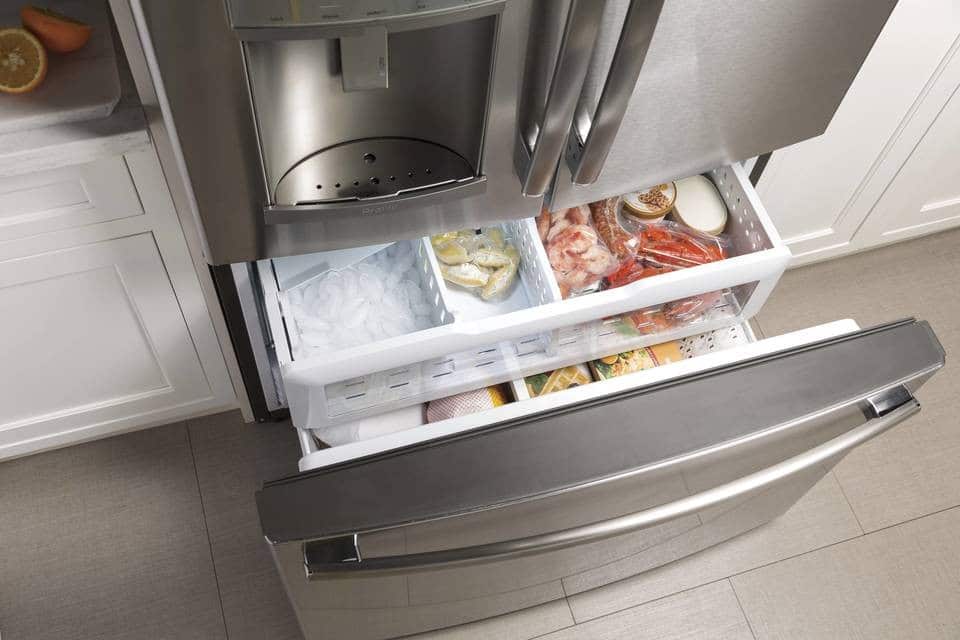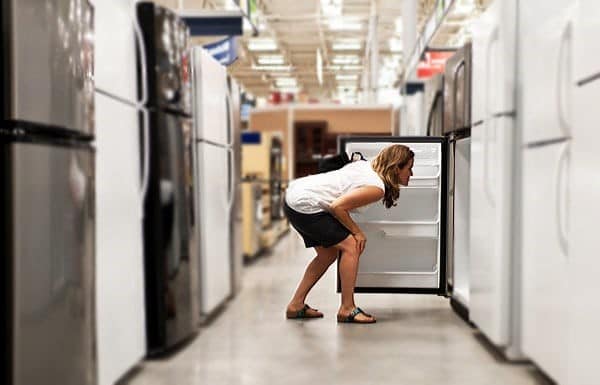We've independently reviewed this article to make sure it's as accurate as we can make it.
To find out more about our article creation and review process, check out our editorial guidelines.
Stuck trying to understand the differences between a single and dual ice maker?
You’re not alone! In fact, thousands of people are struggling with the same issue. The good news is that in this article, you’ll learn all about their differences.
When choosing between single vs dual ice makers, consider your needs. Single ice makers dispense ice in just one location and are generally less expensive, while dual ice makers produce ice in two separate locations and are ideal for big families who require larger quantities of ice.
Read on to learn more about their differences!
Single vs Dual Ice Makers
To make things easier for you, in this section, we’ll compare single vs dual ice makers across 4 categories.
This way, you can relax knowing you’re making an informed decision.
#1 Location
The main difference between the two types of ice makers is location.
A single ice maker fridge will have one ice maker dispensing ice from the door of the fridge. There’s a recess for you to put your glass into for it to be filled with ice.

If you’re wondering what is a dual ice maker, I got you!
A dual ice maker model fridge has an ice maker in the door of the fridge, and an ice maker in the freezer compartment of the appliance, with a bin for collecting the ice.

Dual ice makers are typically found in high-end refrigerators and are ideal for those who entertain frequently.
#2 Ice Production
You’d think that dual ice maker fridges must make much more ice, and you’d be totally correct!
The ice production of a single ice maker fridge is about 3 lbs. of ice per day. In contrast, the dual ice maker fridge is churning out about 6 lbs. per day, essentially double the amount.
So, if you have a big family, a dual ice maker might be the way to go.
#3 Price
Cost wise you’re also going to see a difference. For a single ice maker model fridge prices can vary quite a bit given the product range available, the other features, and the manufacturer.
However, as a general guide, you can usually pick up a single ice maker fridge for less than $1,500.A fridge with dual ice maker functionality by the same manufacturer is going to set you back closer to $2500.
Single ice makers are definitely the way to go if you’re on a budget.
#4 Reliability
Another thing to consider when comparing the two models of fridges is their mechanical reliability. In other words, how many faults/issues is your new appliance going to give you?

Here at Appliance Analysts we like to give it to you straight without fear or favor. So consider the following points and questions to help you along in your buying decision:
- Have you done enough research on the different models of fridges available? Both single and dual ice maker fridges come with their own set of potential problems and challenges.
- A good general principle to follow with appliances is – the more features it has, the more potential there is for stuff to go wrong/break down.
- A common complaint from users of fridges with ice makers is that the single (door) type ice maker is prone to faults in some models.
Also, given their design, some fridges with dual ice maker capability have problems with the freezer ice compartment icing over completely, which can lead to usage and mechanical issues. This typically happens because you’re essentially trying to create a freezer temperature area inside the refrigerator cabinet.
Any air entering this area will easily turn to frost.
These are things you can ask the technical salesperson about when you’re looking into buying a new fridge.
- Have you worked out a proper budget for your fridge purchase? Have you included ‘hidden’ costs and things like shipping and insurance?
- Are you certain about the functionality you require in terms of ice production, and how does this relate to your budget – both for initial cost and for potential mechanical issues out of warranty?
A dual ice maker model fridge is wonderful for large volumes of ice and would be a wise buy for somebody that lives in a very hot climate or that entertains on a large scale.
It’s also important to make sure you’re buying from a company that is prepared to support you with technical assistance if needed and that offers a warranty.
How do Ice Makers Know When to Stop Making Ice?
Fridges have both mechanical guards and electronic things like sensors installed to tell the ice maker(s) when it has made the right amount of ice.
If your fridge is mechanically and electronically sound, you should always get the right amount of ice for your needs, but not be drowning in it either!
If you’re having issues with your ice maker’s production, here are some things you can try:
Too Little Ice
- Check that your refrigerator is standing completely level. If the refrigerator is slanted or uneven, water may not be getting into the water delivery pipes or ice maker.
- Check the ice maker unit and make sure it’s also level.
- Check the water supply line – if it’s twisted, damaged, or has a kink in it, water won’t be getting into the ice maker.
- Check the fill cup and make sure it’s correctly aligned with the ice funnel.
Too Much Ice
- Check that the bucket is properly positioned directly under the ice maker.
- If your refrigerator has a small shelf that sits directly above the ice bucket, make sure this is firmly and properly in place, not skew.
- Check that the feeler arm is not broken. The feeler arm is either a metal rod on the side of the ice maker OR a plastic paddle that sits horizontal under the ice maker. If the arm or paddle is broken, you will need to replace the ice maker. Contact your fridge’s manufacturer to get the right part for your model fridge.
- Check that the metal arm is not moving up and down on its own. The ‘off’ position should be all the way up.
- The plastic paddle is moving in and out when the ice maker cycles. When the paddle is pushed in under the ice maker, it is then in the ‘off’ position. To turn the ice maker off, find the on/off toggle switch or slide switch on the side or front of the ice maker and turn it off.
- In some fridges there’s a freezer shelf that has to be installed correctly, so check this too. The shelf is there to lift the ice bin. If that shelf isn’t put in properly, the feeler arm can’t correctly judge the level of the ice in the ice bin, causing the ice to overflow.
Conclusion
We’ve discussed a number of aspects of both in this article, but it really comes down to what YOU need and want.
We’ve provided some valuable tips for shopping wisely and making smart appliance choices in this article.
Both single and dual ice makers are great innovations, and for hotter climates and entertaining, many people simply couldn’t picture life without them!
Examine your lifestyle, space, and the budget you have available, remember the top tips given in articles like this one, and we wish you exactly the right amount of easily available ice for any occasion!
Thanks for reading, have a great day!







